Big and small: in the field with a D800/55mm Otus and an A7r/35mm Summilux
Andrew Paquette
My background is as a visual artist, not a photographer. I started out as an editorial artist in New York, then became a comic book artist, a 3D artist in the video game industry, a special effects artist in the feature film business, and then an art director in video games. Throughout my career I have made extensive use of cameras, but only in a utilitarian way. For an illustration I did for Travel & Leisure, I took reference photos with a Polaroid. For an issue of the comic Nightbreed, I used my Nikon 2020 to shoot some friends in my loft, again as reference. For the movie Spider-Man, I used photos taken by one of my colleagues to build part of the 3d New York City set. For my paintings, though I preferred to paint subjects “live”, I sometimes took photos with my D70 for reference. On one painting in particular I had the nagging feeling that if only I’d had a better camera I could have skipped painting it. It turned into a fairly popular poster, but even today I think that a photo of the same scene would have done just as well or even better. Now that I have that better camera, I am fairly sure that is true.
I have read in many places that it doesn’t matter what kind of camera you have if you have a good eye for a picture. I would say that if you don’t have a decent eye for what makes a good picture, it won’t matter as much what kind of equipment you use, but it will still make a difference. If you do have some experience making pictures, the equipment can make a huge difference.
At the moment, my two favorite camera/lens combinations are almost exact opposites. One is huge, the other is tiny. On the big end of the spectrum, I love my D800 when paired with the Zeiss 55mm Otus lens. On the small side of things, I am equally pleased with my Leica 35mm Summilux ASPH when mounted on an A7r. The difference between how these two kits handle cannot be understated. The D800 + Otus is so ponderously heavy that I literally injured my hand using it (and even had to go to the doctor as a result). The A7r + Summilux is so tiny that I can carry it in a hip pouch and forget it is there. At face value, one might think that the small setup is the way to go but I have found the images I get out of the D800 + Otus so compelling that I take it out for a walk just as often as I go out with the A7r. I have not put the Otus on the A7r as others have done because for me, the purpose of the A7r is to have something lightweight and discreet. If I’m going to use the Otus, it won’t be discreet no matter what it’s mounted on, so I may as well have the higher frame rate offered by the D800.
When I bought the A7r, I was planning on switching to an all Sony/Leica system so that I could travel more easily with my photography gear. At first, I thought that was how it would work out, but then the Otus was released and I got curious about it. The next thing I knew, I had the Otus and found that it was capable of a wonderful medium format look. The A7r/Summilux would have been a perfect combination to shoot the subject I painted that was mentioned earlier, but the D800 + Otus would have been better for another painting I made shortly thereafter. Despite the extra weight, I found that I wanted to keep the D800 (and all my Zeiss lenses) and the A7r. Now, I use the A7r whenever I travel by plane, have to stay in a hotel, or if my arm is not feeling up to walking around with the Otus. Otherwise, I almost always use the Otus. For special occasions, other lenses will get a ride on the D800, but these days I almost always use the Otus.
I should also give a plug for Zacuto viewfinders here. After using the Sony’s vastly superior electronic viewfinder on the A7r, I was too spoiled to be satisfied with the optical viewfinder or live view on the D800. I use the Zacuto Z-finder pro 3x on both cameras now, and hardly ever misfocus as a result. As an added bonus, my exposure is much improved thanks to the Zacuto’s ability to isolate the LCD from exterior light. For the D800, I leave the mounting plate attached to the camera body, then snap on the viewfinder when I need it. For the A7r, I do not attach the mounting plate, but wear the Zacuto on a lanyard around my neck instead, then hold it up to the live view panel when needed.
With all that preamble out-of-the-way, here are some photos. Most were taken in Amsterdam, but several were taken on a recent trip to Geneva with the A7r. See the captions for more detailed information.
–
1 The A7r+35mm Leica Summilux ASPH
Carnival ride, Amsterdam. There was a carnival in Dam square a couple weeks ago when I shot this image. The ride was moving so fast that I was amazed I could get any shots at all with the manual focus Summilux, but got several regardless. The real problem was that the seats on this ride spun from the arm they were attached to, meaning that I only occasionally had riders facing the camera.
Breakdancing at Museumplein, Amsterdam. There is a troupe of breakdancers that I have now photographed three times at Museumplein. The first time I shot them on an overcast day with a Zeiss 15mm Distagon, then with a 55mm Zeiss Otus, and here with the 35mm Summilux. Like the carnival ride, I was worried about shooting fast action because of the A7r’s comparatively slow shots per second, but it worked out fine. I didn’t get as many shots as the D800 would have provided, but it was enough to get the exact shots I wanted.
Indian magic trick at Leidseplein, Amsterdam. Although I avoid doing so with my other lenses, I love shooting backlit subjects with the A7r/Summilux combo. It isn’t that I never get decent shots of this type with other lenses, but this combination yields terrific contrast in these situations.
Horse-drawn coach, Amsterdam I’ve tried several times to get a decent shot of this horse, and finally got it with the A7r. One thing I love about the 35mm Summilux is its ability to provide context to a subject, as in this case by showing the environment around the horse.
Particle beam casing and magnets, CERN, Geneva. My friend, Dr. Richard Breedon, has been associated with one of the experiments at CERN for as long as I’ve known him. Recently he offered me an opportunity to come to Geneva and take some photos. I think he gave me something like two days’ notice, but I’d wanted to do it for quite a while, so I got the plane tickets right away and flew down. Taking pictures at CERN was made difficult by the poor lighting and the bizarre colors almost all the machinery was painted.
Scientist calibrating panel at CERN, Geneva. This was one of a small number of shots I took at CERN that has a human subject in the frame to give a sense of the scale of the beam magnets. This scientist is standing at the base of one of these things, which are about 30 meters in diameter. Like most of the shots taken in this area, I converted it to black and white to get rid of all the brilliant green, red, and yellow painted objects.
Skier at Chamonix. Richard and I drove down to Chamonix the day after photographing CERN, to have a look at the slopes near Mont Blanc. This shot was taken in an ice cave at the top of a perilous cable car ride. From here, it was all downhill. Most of the shots I took in Chamonix were taken with ISO 50, f 16, and 1/4000 shutter speed. This was one of maybe three shots that had more normal settings. I would post some of the others because I like them, but anyone who has ever been to this location will have very similar shots because there are only a few places to take pictures from unless you want to risk life and limb.
Geneva auto show, Geneva. This shot looks pretty bright, but it was an indoor space lit with artificial lights, so it wasn’t that bright. This is where having a 1.4 aperture option comes in extremely handy. At ISO 400 I was able to shoot this at 1/400th of a second. One thing I should mention here is that I avoid shooting the A7r at less than 1/200th of a second to avoid shutter vibration, even if it means a higher ISO than I would normally use. In the 1/60-1/125 range, shutter vibration is noticeable, so I just don’t use those settings at all.
Swan on Lake Geneva. I took about 20 shots of these swans, all in attempt to get one shot of water dripping off their beaks. After thinking I’d missed the shot every time, I found that the first shot got exactly what I wanted.
Pedestrian, Geneva. This was taken after sunset. Streetlights were just coming on and it was starting to get difficult to see. Despite the lack of light, the Summilux delivered a very nice tonal range.
Missing the pocket, Amsterdam. When I spotted this couple walking down the street, I had to get a shot of them. I turned around and snapped about five or six shots before they disappeared into a crowd. I particularly like shooting with the Summilux slightly after sundown because of the rich blue violet shades that permeate images made at that time of night. The same evening I took some other nice shots of boats and lights reflected in the canals. Absolutely gorgeous light.
Roman Road golf course, Wales. I took this on the last day of a conference I attended in Wales. Until that morning, the region had been buried in deep fog that made it almost impossible to shot anything. I was grateful when the sky opened up a little to allow this image to be taken.
2 The D800+55mm Zeiss Otus
Parked cars, Bergen op Zoom. In the Netherlands, it is very common to see trees trimmed like the ones in this image. Coming from the U.S., I think this looks a bit strange, but interesting. In this shot, I like how the shallow depth of field blends all the twigs together in the background, creating a kind of smoky bramble above the cars.
Looking and not looking, Amsterdam. To get this shot, I parked myself in front of the violet lamp-post, focused on it, then waited for people to walk by. When I got home, I was fascinated by how sharp the lamp post is. I’m still not used to this quality the Otus has. The Summilux has terrific color and contrast, but the neutral color and outstanding sharpness of the Otus are mesmerizing to look at.
Artist, Spui, Amsterdam. This shot looks about as cold as Siberia, but it wasn’t very cold at all, nor has it been all winter. We didn’t even have snow this year. Normally I don’t like to take pictures of paintings unless they are mine, but in this case I liked the large amount of white space interrupted by these couple of spots of intense color.
Couple, Museumplein, Amsterdam. This shot, like many other shots taken with the Otus, looks like medium format photography to me. It also reminds me of the colors one finds in color photography from the 1950’s. The people in the Netherlands tend to be tall, and I like how this man looks like a giant in a tiny seat as he eyeballs my camera.
Girl with braid, Amsterdam. The primary reason I shot this is because of the colors in this little girl’s clothing. While I think of the Summilux as being particularly good at dealing with blues and yellows, the Otus seems to like pinks and greens more. This may just be my imagination, but it has led me to shooting specific colors with this lens because I think they look better with it.
Hands with tiny camera, Amsterdam. Unlike the monster I shot this with, the camera in these hands is barely visible. I had wanted to get a picture of this man because of the complex pattern on his jacket, but he ducked into an alcove, took a picture of a building across the street, then went back the way he’d come. I took this in anticipation of him coming out of the alcove in a moment, but he didn’t do it.
Green and red, Haagse Beemden, Netherlands. I may be the only person in the world that likes this photograph of practically nothing, but I really do like it because of the colors. It is just a garbage can and a big red cylindrical building on the edge of a manmade lake, but I like the combination of red and green.
Organ, Amsterdam. I have taken a lot of photos of cathedrals, but not as many of the organs, which are usually so high above the ground that it isn’t worth the trouble to shoot them with less than a 100mm lens. This one was lower than most and had great color.
Breakdancer, Amsterdam. A problem had with the Zacuto is that the D800 live view screen will go black after the shutter is pressed until the image is finished saving. This meant that as I tried to follow the breakdancers with the camera, I could only frame the first shot by eye, and then the rest (if shot in continuous mode) I had to guess. For this reason, I have decided to use the Zacuto for initial focus when shooting action, but will remove it after it is focused so that I can track the action. For this type of shot, I thought the A7r was easier to use because I didn’t have to deal with the Zacuto getting in the way of the EVF.
Skater, Amsterdam. To me, this skater looks almost like a superhero in this shot. I have at least a hundred shots of skaters in this park, but this is easily the most elegant of the group.
Intersection, Amsterdam. It almost seems criminal sometimes to turn some of these images to black and white, but in this case I felt it was worth it to enhance the effect of the light falling between buildings on the opposite side of the street, silhouetting the man on the near traffic island.
Bubbles, Carnaval celebration. This is another one of those shots that demonstrates how brilliant the Otus typically is. It’s pictures like this that have me wanting to think up some decent staged shots, find some models, then do some deliberate shoots to get a specific composition instead of hoping to find something interesting while walking around town.
3 Conclusion
I have a hard time saying that I think either of these kits is better than the other because they are both clearly very capable systems. A funny thing about the handling of them is that while I wish the Otus didn’t weigh so much and was less bulky, using it is in some ways more comfortable than using the A7r. The A7r is easier to carry and less obtrusive, but I feel less in control of making the image than when I am using the Otus. I think this is because of the long throw on the Otus, which allows more fine focusing. With the A7r, I always worry that I’ve tapped the little focusing knuckle ring a little too far or not enough when taking a photo. Since I can tell whether it is in focus or not by using the EVF or Zacuto viewfinder, it is a silly concern to have, but it doesn’t stop me from feeling more confident when shooting the Otus. Having said all that, when selecting images for this article, I initially had almost twice as many Summilux shots as Otus shots as candidates. Is this because I unconsciously favor the Summilux? I wouldn’t know.
AP

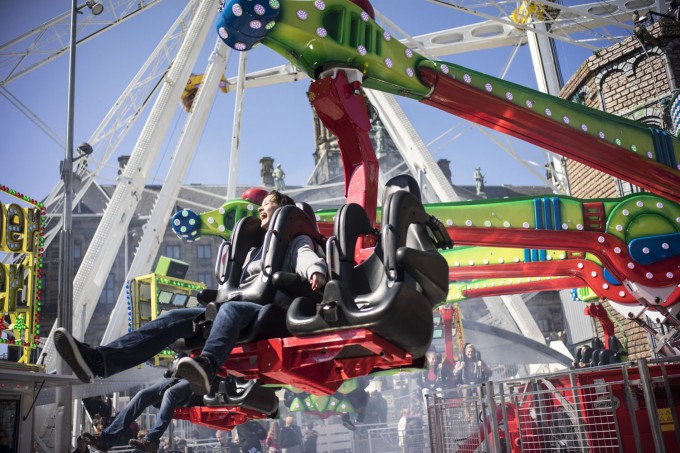
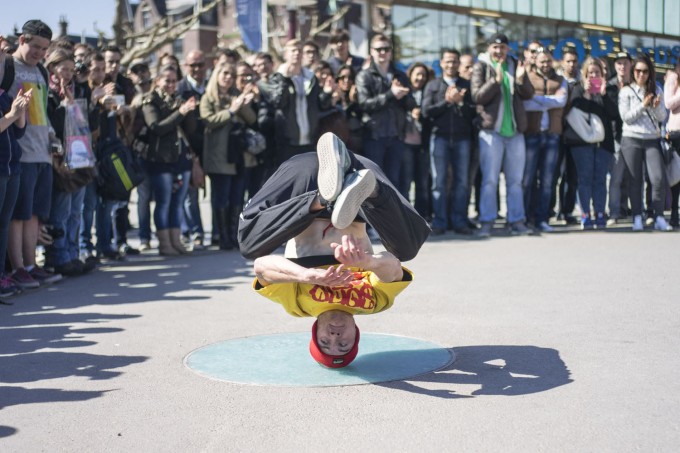
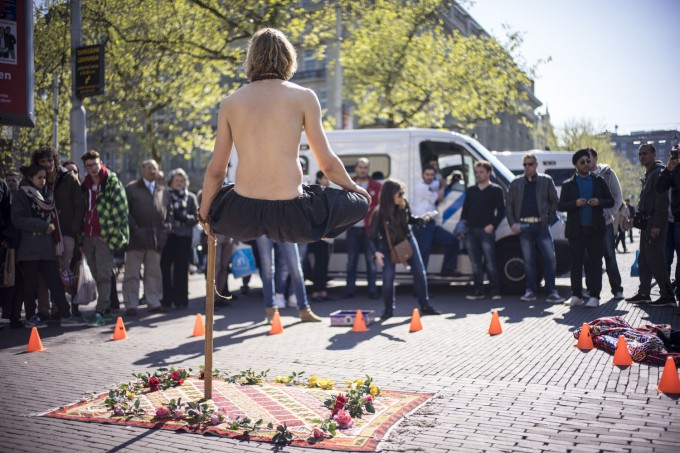
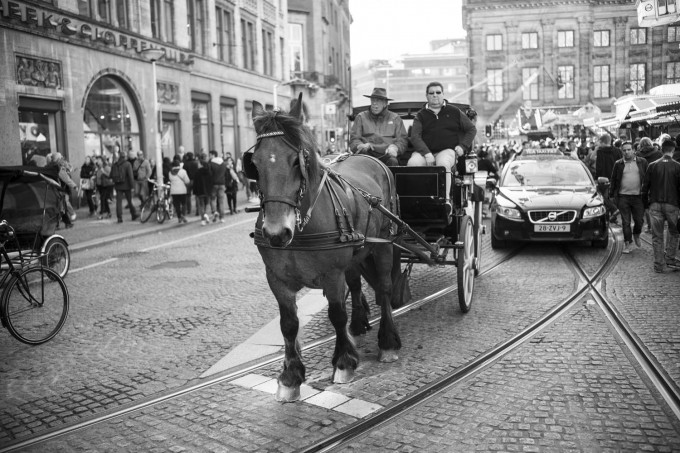
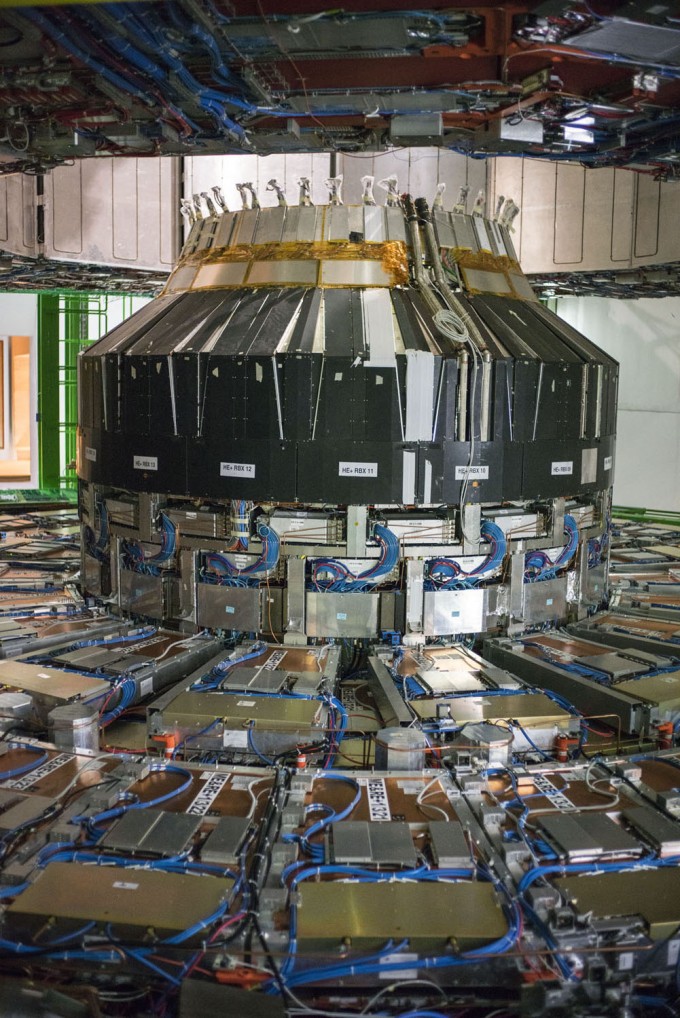
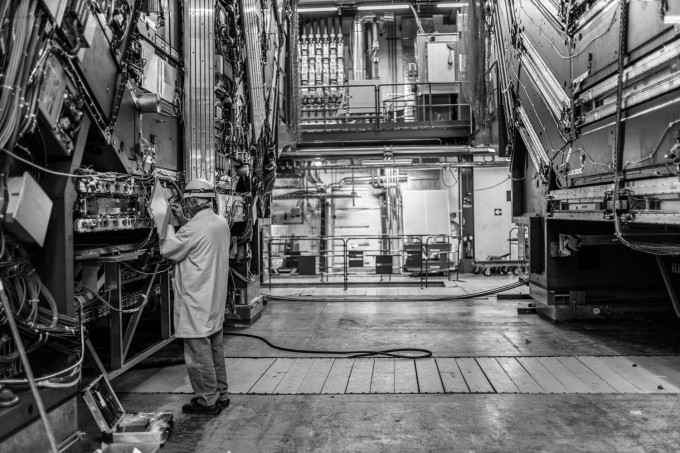
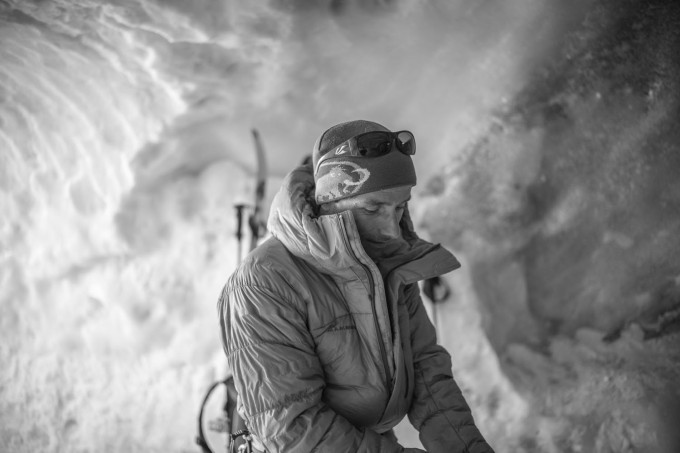
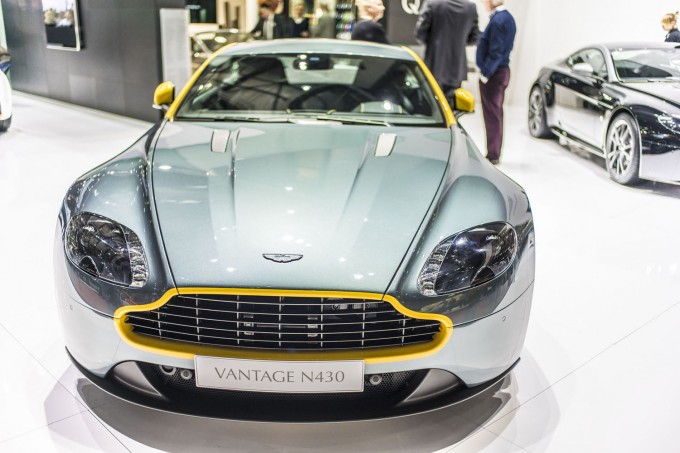
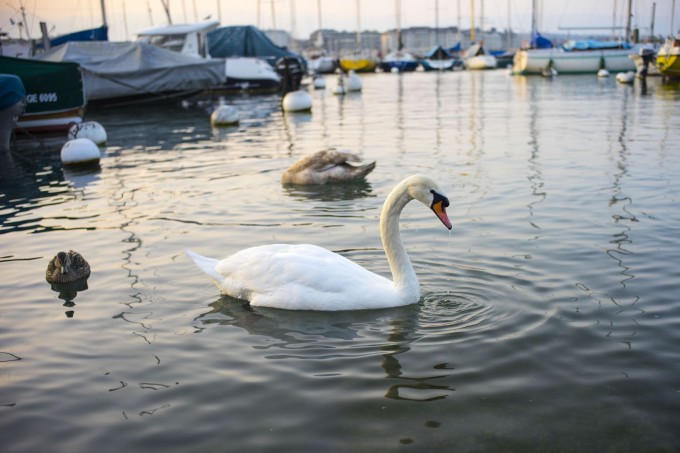
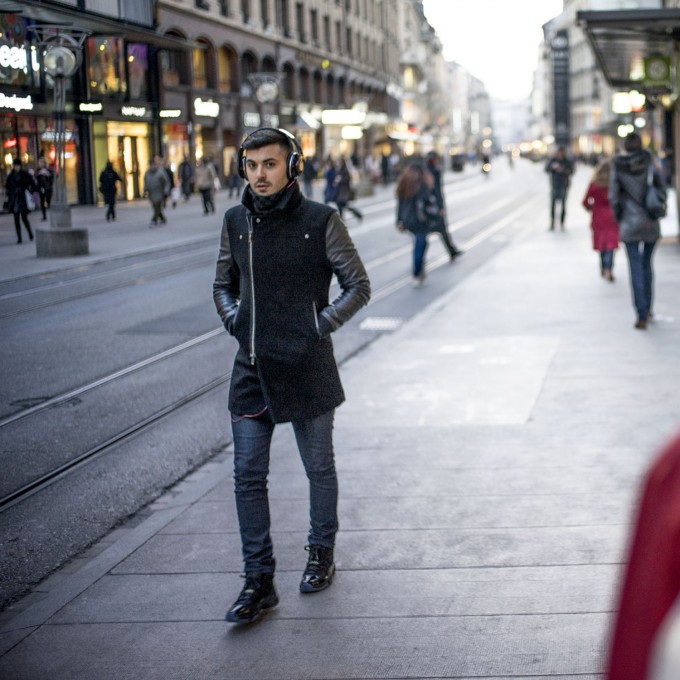
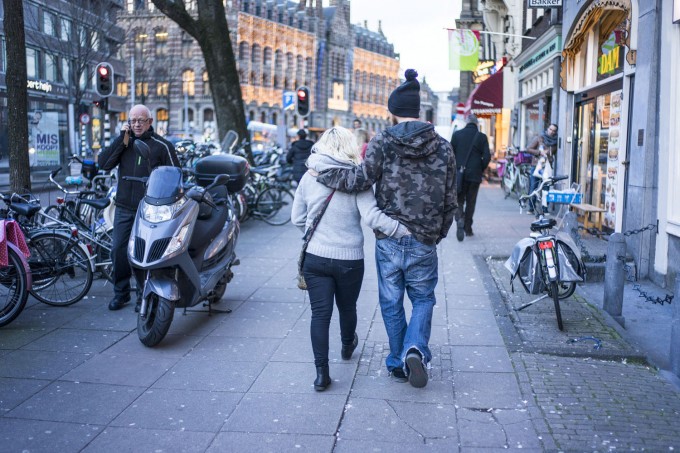
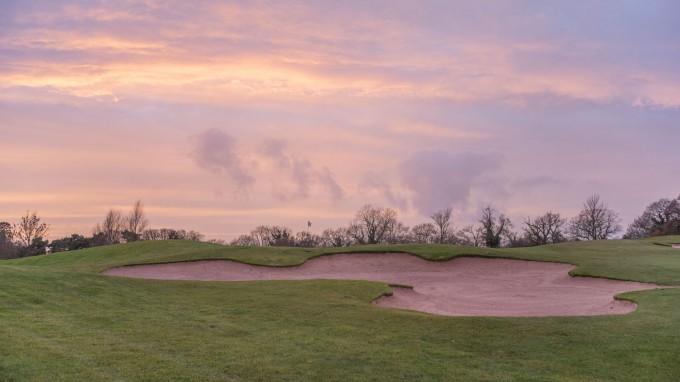
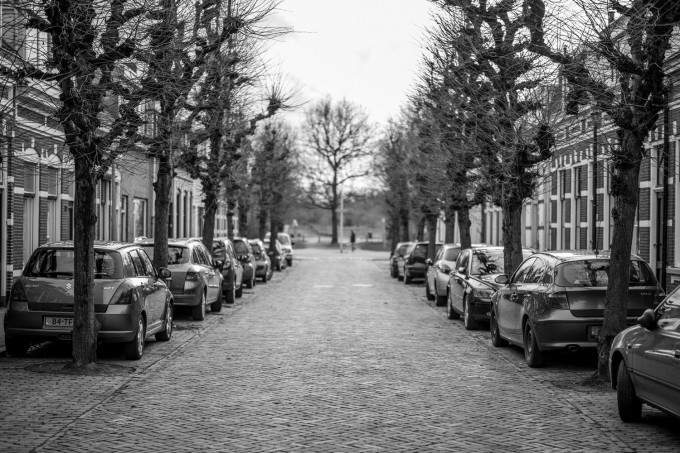
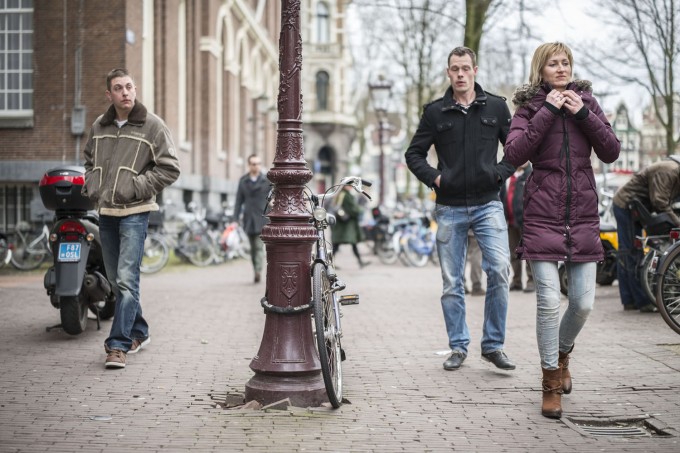
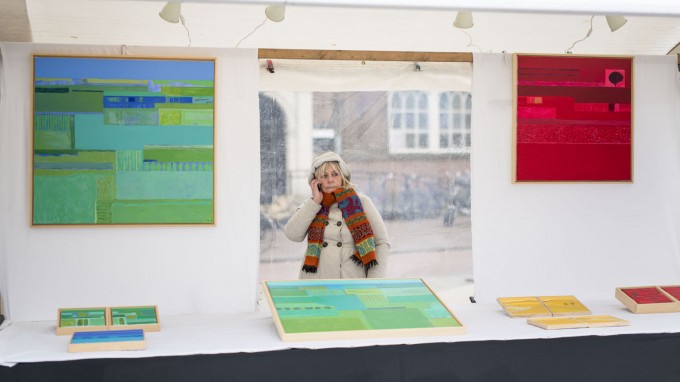
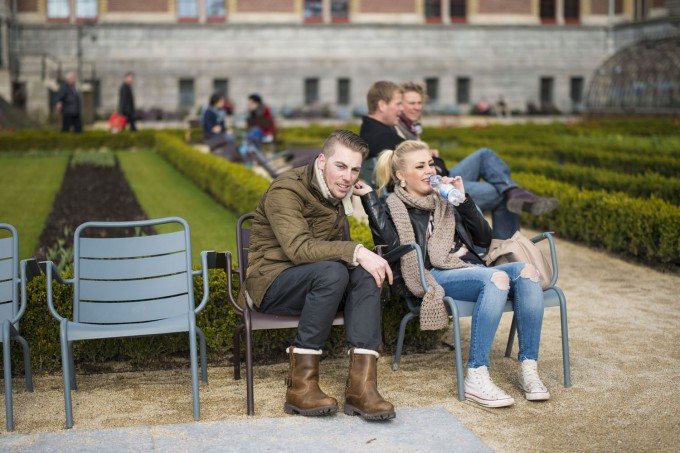
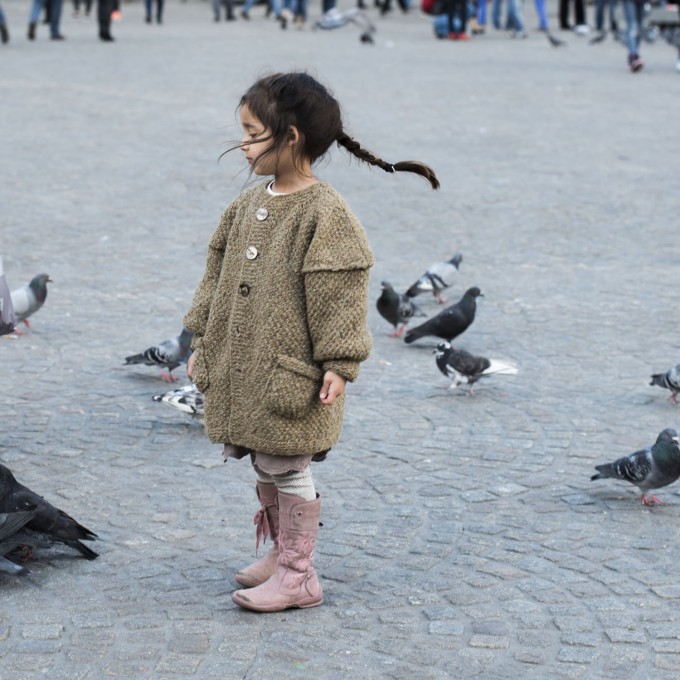
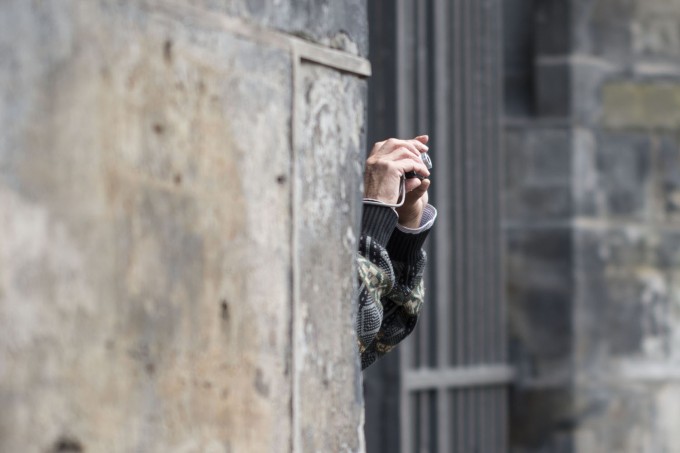
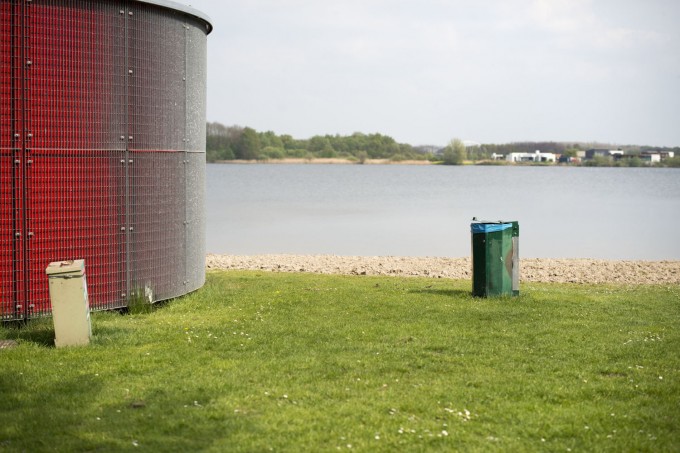
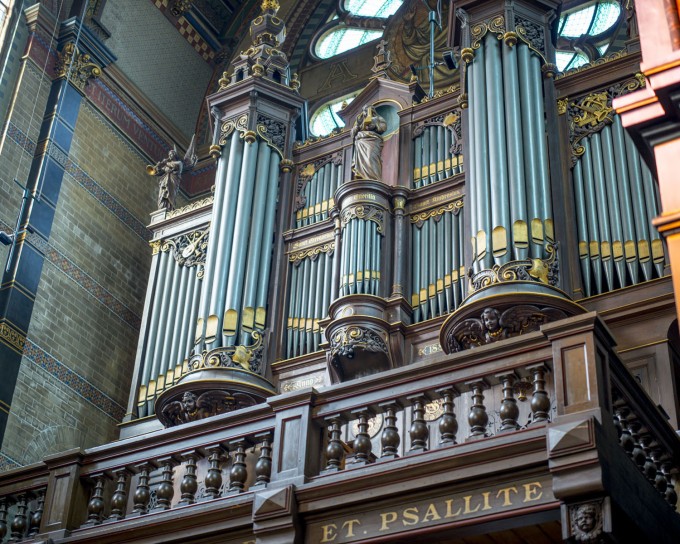
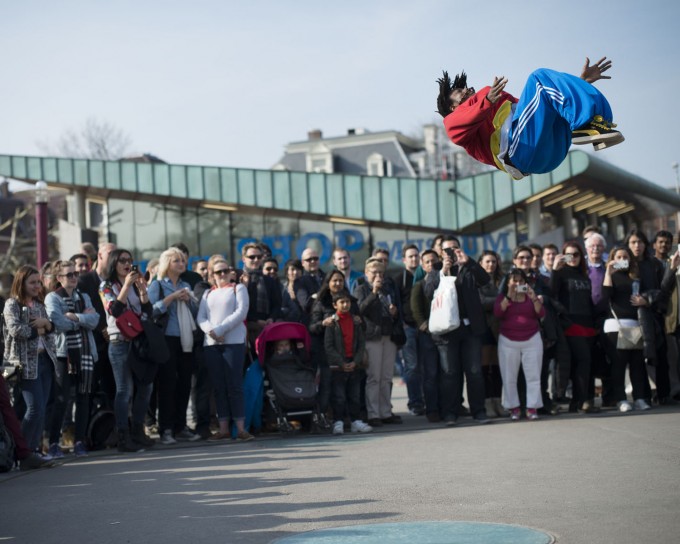
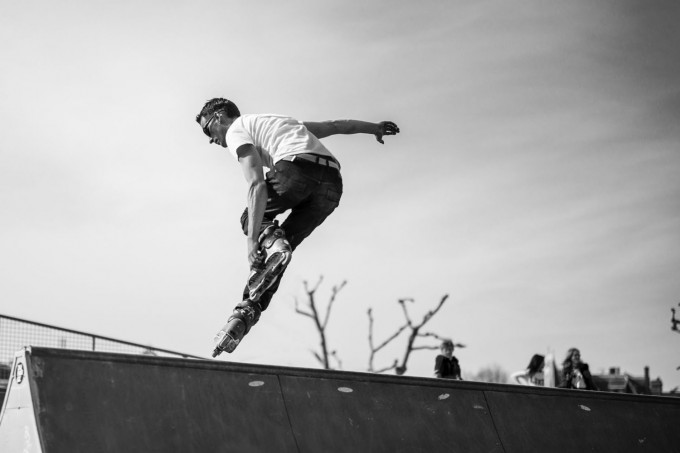
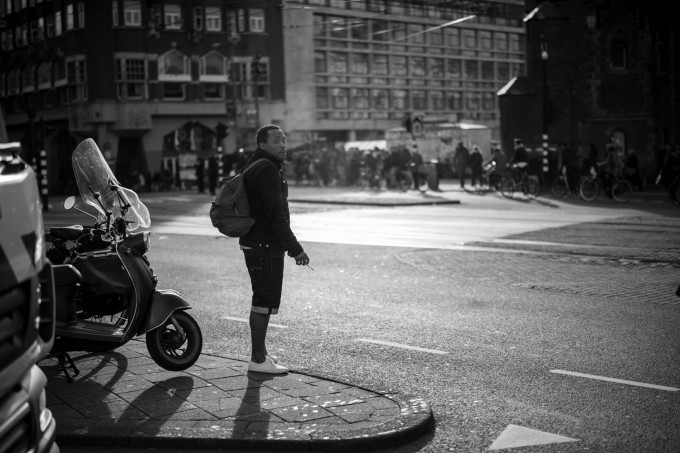
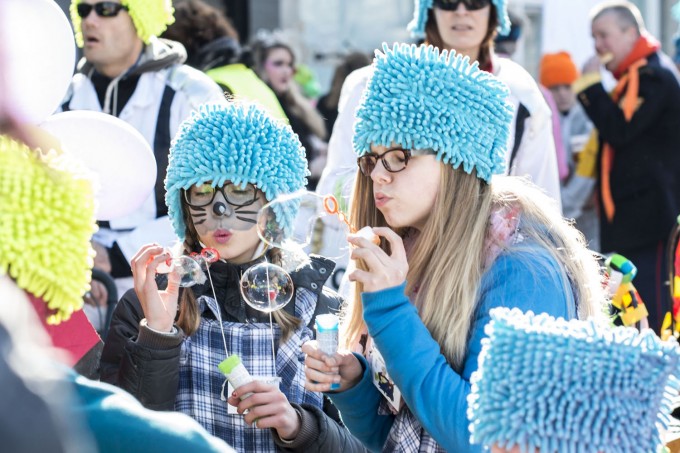


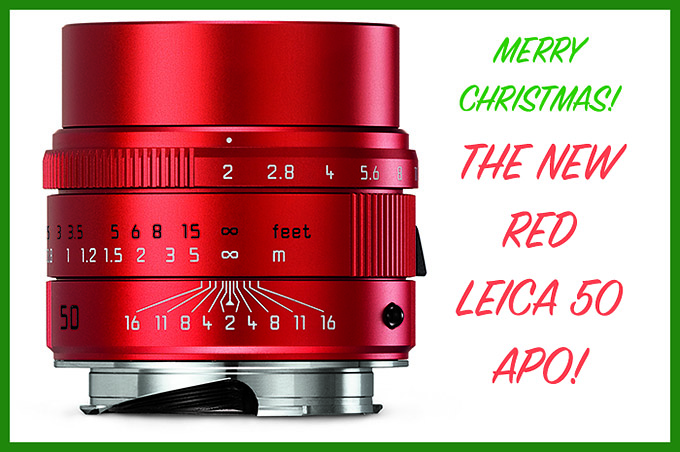
Andrew,
It is only a suggestion, but you may get a better response if your posting was short and pithy and didn’t range over too many topics. There is a lot to digest here, perhaps too much in one go,
I just noticed that I have been trying to respond to posts here without first logging in. This means that about ten responses disappeared without a trace. The first thing I would like to respond to are the couple of references to the word “snapshot”. I understand that snapshots are evil things according to some photographers and therefore are something to avoid. I also notice that the initials of Henri Cartier-Bresson (HCB) are frequently invoked in discussions about snapshots. HCB’s photos are not used as an example of what a snapshot is, but what it is not. And yet, when I look at various descriptions of the term “snapshot”, it does seem to describe HCB’s work pretty well. His subjects are uncontrolled, the lighting is whatever it is, with no help from reflectors, flash, or other paraphernalia. The events he photographs happen too quickly for him to prepare for them, leading to spontaneous compositions of everyday life. But here is the difference: he captures what his admirers like to call “the decisive moment”. As I interpret this, the decisive moment is what allows the image to project story content. That is, the image will have wit, drama, romance, or literally a story, all told within the four corners of the shot. To me, the “stories” in HCB’s work are not interesting. His compositions are fine, but for this kind of photography I much prefer Elliot Erwitt but am nonplussed by HCB. The reason (I think) is that Erwitt’s work has a friendly quality I enjoy, in contrast to the colder eye of HCB.
Now in photography circles the word snapshot is a derogatory term, uttered with a mental sneer if not a physical one, to denote images taken by people who should be spending their money on food for starving children in North Korea instead of cameras. But what of images that have no story? Are these always worthy of a sneer? I am not a fan of HCB’s photos (or Man Ray’s, or Frank Capa’s, to name a few well-known names). Recently, I walked straight through a huge exhibit of HCB’s work in about five minutes while a friend spent almost an hour in there because I didn’t care for the images but my friend loved them. On the other hand, if the show had been full of high quality product shots of watches and so on, I may have pored over that for an hour and my friend would have dashed through as if the gallery were infected.
Advertising photography sometimes tells a story but oftentimes it doesn’t. The same goes for glamour photography, both of which I prefer to HCB’s style. But advertising photos are not “snapshots” because they are tightly controlled images. Usually they are shot in a studio, the compositions are designed in advance, all the lighting is tightly controlled, every color is decided in advance, and reshoots are not only possible, but completely normal. On a technical level then, these are not snapshots, but they often do not have a story, unless one counts a shot of a van Cleef & Arpels diamond necklace as telling the “story” of luxury and wealth. That would be a stretch if compared to the story presented in an HCB photo of a man jumping over puddles: why is he there? Will he get wet? What kind of person is this man? etc.
What of non-photographic images? My background is in painting, and there are many painters whose work can be described as “snapshots” in some way. For the time being, we are ignoring non-objective or conceptual art that has no content at all. For instance, Pablo Picasso and Henri Matisse are but two of many well-known artists who confined most of their efforts to paintings of nude models in a studio. There are exceptions, but no other subject dominated the work of either man as much as this one. And what is the purpose of figure studies like these? Their origin is as an exercise for students. The end goal is to be able to paint realistic finished compositions that incorporate human subjects, such as Gericault’s “Raft of the Medusa” or any of Nicolas Poussain’s religious works. And yet, Picasso, Matisse, and many others spent most of their working careers taking what amounts to snapshots of nude models in a studio. There is no story, drama, or wit. The compositions are monotonous from painting to painting, yet they are interesting because of the way they are painted: the colors of Matisse or the strokes and abstractions of Picasso, both of whom, by the way, were photographed by HCB. Matisse and Picasso are the rough equivalent as painters of photographers who shoot fashion. The goal there is less about story and decisive moments than about style and color.
What of painters who don’t even paint people? Unlike the now-forgotten but highly skilled historical painters of the nineteenth century, their compositions have absolutely nothing going on in them. The French Impressionists, rejected by their contemporaries but accepted by millions in the years after their deaths, have become the most popular artists to have ever lived. And yet, all they are known for are their images of unpeopled bucolic landscapes. Colorful yes, but beyond that, there is very little going on. Photographs of the identical scenes would hardly command the same level of interest. Or would they? Ansel Adams is well-known for his excellent photos of unpeopled landscapes. There is no decisive moment in his images, yet they command attention regardless. He cannot control the lighting any more than HCB can control the lighting in a snapshot he takes on the street, yet the images are attractive and worthy regardless.
Are there any photographer-equivalents to artists such as Cezanne, whose still-lifes are particularly prized? Cezanne’s paintings of apples and pears on clean white linen are highly appealing to collectors, yet there is no action, no beautiful scenery, no people, no story. I briefly worked at the Ted Bates ad agency in the 1980’s. Back then they were doing a watch campaign that utilized the services of a photographer who somehow managed to imbue his watch photos with such solidity and appeal that they were utterly fascinating to look at, even more so in some ways than any non-photograph still life I’ve seen in a museum, including by Cezanne and I like Cezanne.
In photography, I see snapshot artists like HCB and Erwitt, who elevate the ordinary into something interesting, but the photos are still “snapshots” in the sense that they are uncontrolled in many ways. Of the two, I don’t like HCB’s work at all, while I find Erwitt’s very appealing, but the point is that they both take snapshots that have extra value because they have selected moments that convey story. This is not the only kind of photo that can be described as a snapshot though. Landscape painters make images that I would definitely describe as “snapshot-like” because they are invariably viewed from the same angle (an artist at an easel, five and a half feet above the horizon), include no people or other story elements, and are in every way nearly identical to any other composition they could have selected from the same environment. However, because of their style, the image transcends its snapshot characteristics and becomes something more. In landscape photography, more is demanded because anyone can take photos composed the way the Impressionists composed their pictures. Even in Ansel Adams’ day, but particularly in more recent times, landscape photographers are expected to find unexplored territory, use unusual camera angles, and perhaps lenses that distort the images. Despite all this, the quality landscape photographers make work that is typified by the same qualities that make Impressionist painting compelling: color and presence. If the image captures the essence of the scene, it is successful. This is not dissimilar from the decisive moment so frequently quoted in the context of street photography.
Still life painters and product photographers are in my opinion less similar than their subject would suggest, but this is influenced by the still life artists I like. If I go back to Dutch still life painters from the so-called “Golden Age” of Dutch art (17th-18th centuries), those paintings are similar to modern product photographers. The reason is that in both the goal is to make the subject look as appealing as possible. More modern still life artists like Cezanne or Morandi are not trying to make the subject of the still life appealing, but to make a rectangular piece of decorative art that happens to feature still life elements. For them, the blue wall behind a bowl of fruit is just as important as the fruit, whereas in the earlier Dutch compositions, the fruit would be the product being “sold”, so the background would be de-emphasized. For this reason, modern still life artists can be grouped more readily with Picasso, Matisse, and other artists whose work is meant to focus on attractively designed color than anything else. For these artists, style is what counts. In that sense, they are more akin to fashion photographers than any other branch of photography.
Fashion photographers sometimes embed stories in their work. Other times they don’t. The point is that there are many fashion photos, many exceptionally good fashion photos, that have no story at all. Many of these also could be described as not being the decisive moment. An image of a reclining woman wearing a nice Hermes scarf can be beautiful without transcending the requirements of a story-based photo, like Erwitt’s famous image of “colored” and “white” drinking fountains in the American south.
A complaint that a photo is “just a snapshot” is not a valid comment or critique. There are too many excellent photos that can be fairly described as snapshots for this designation to be utterly meaningless. It is almost as useless as to say that something is “bad” or “good”. When I first got into the comic book industry, it was largely thanks to a comic book writer I knew who gave exceptionally clear critiques of my drawings. A very well-known comic book artist had critiqued my work a couple of times, but he was no help at all because he couldn’t get past “good” and “bad” or “snapshot” and “photograph”. From what I have seen on photography forums, the word “snapshot” when used in the context of a critique, conveys no meaningful information at all beyond the attitude of the person writing.
Perhaps because of my training as a painter, where style is much more important than story or content, my favorite photographs tend to be fashion, landscape, and product shots. I like Erwitt’s work because it is often humorous rather than for their artistic qualities. A Demarchelier on the other hand, makes me think of painters and paintings. That is the kind of photography I like. So when I go out on the street to take photos, I am not trying to emulate HCB or Erwitt. I happen to aspire to taking style photos at some stage of my development as a photographer, but before I lay out the money for models, which are much more expensive than camera gear, I want to feel comfortable with the camera first. So I take “snapshots” as what you could describe as sketches, of things I may want to shoot later with controlled lights and actors (models) to liven up the scene.
AP
Andrew, could you elaborate then on the “painterly” intent and quality of the images you posted, going a bit further than just the captions?
I, for one, am attracted by the soft sharpness of my D800’s raw files; more than by the almost bitingly sharp files emanating from the Df/D4. That “soft sharpness” gives a paintinglike rendering, which lends itself particularly well for street shots in the centre of Amsterdam.
All it means is that I tend to be more sensitive to color and design elements than story elements. So when I take a picture of the little girl with the ponytail because of the colors in her clothes, that literally is the subject: the colors in her clothes, not her pose or what she is doing. The texture of her wrap or sweater was also interesting, so worth shooting. The picture of the lake is similar: I liked the strong green grass with the red building on the left and the pale blue of the lake. A painting of that would be quite strong as a decorative non-narrative composition. The colors in the shot of the swan at the lake in Geneva are likewise enough justification for a painting even if the subject is common as a photograph. All this means is that it takes some effort to stop looking at the kind of factors that would influence me to paint a subject and instead pay attention to factors more relevant to the medium of photography.
BTW, if you have a website I can take a look, but I am not on Facebook, so I can’t see your page.
AP
Just a Flickr account, Michiel953.
test #22, is it possible to post replies?
pressed twitter icon, then twitter account to login
Brief login message then notification “you are using twitter account”
press “post comment”
Well, who knows? You, probably. 😉
I made almost twenty posts before I found out that my Google credentials weren’t working, so I switched to Twitter. Sorry for the content of that post, but just be glad the preceding 21 tests didn’t get through. As soon as I saw that this one worked, I used that account to make my real replies.
AP
I agree with Fergus Fitzgerald.
And i think many of these photos call for other camera lens combination.
I think i’ve never comented here in steve huffs site but, i think its starting to lose the initial feeling. i’m a geek, i’m photographer, i don’t have the gas problem anymore, if i ever had, but recently i’m seeing to many product afficionados and less photography lovers. 🙁
I’m sorry to read you suffer from this misconception. You could alleviate the problem you perceive simply by writing your messages a little differently. For instance, why not be helpful and suggest the different camera/lens combination rather than simply condemn it and walk on? If you see what you think is a “product aficionado” rather than a “photography lover”, perhaps you could ask some questions to find out if your impression is correct or a mistake on your part? You may be surprised to learn that naivete is an adequate disguise for a “photography lover” when you fail to ask the right questions. Keep in mind that all photographers, including whichever ones you idolize, had to start somewhere. If you looked at their first photos, how would you label them? Better yet, why would you attach labels to anyone? What purpose does it serve beyond asserting the ascendancy of the class you think you belong to?
These images look just like ordinary tourist photos which is fine if that is what you want? You could make it better by doing a kind of unique twist to the tourist photo -a little bit of visual ssubversion done with wit . This could be really good IMHO but you dont need anything like the expensive equipment you have here to achieve this. Sometimes good equipment can get in your way.
Best Wishes
Well, I’ll just disagree regarding equipment. It is apparent to me that I am taking more pictures with good equipment than I did with my old gear and that is already a big improvement. Add to it that the IQ is significantly improved and that is also a significant improvement. Sometimes I get the impression that posters have an idea of what kind of photo “should” be taken with each price class of camera gear. If a photo falls outside those expectations, it is like heresy. I am not writing this part because of your reply, which I think was rather decent, but because your comment reminds me of something that several others here have insinuated: that until a person makes pictures of a certain description, they have no business using good equipment.
I have seen weak artists use very expensive paint in ways that seem extraordinarily wasteful to me because the quality of paint is not sufficient to offset their lack of skill as designers, colorists, or draughtsmen. With cameras I have a different opinion because better equipment always yields higher image quality even if the content is identical. The quality of content can vary dramatically, but that has nothing to do with IQ, which the quality of camera and lens will affect. The next issue is comparing what one person will do with a very fine camera (Patrick Demarchelier, for instance) vs. someone else with less experience or ability. It is obvious there will be a difference, but who cares? If the guy who isn’t Demarchelier gets what he wants or enjoys the effort even if he doesn’t, who does it hurt? Unlike paint, digital images can be made and thrown away by the million without wasting any raw materials.
This reminds me of something I see all the time here in the Netherlands: very old men riding extremely expensive road bikes (at about €4,000+). Young men whose legs are much stronger and thus are more capable of exploiting such bikes to the fullest are only rarely seen on the better bikes, and usually only if they belong to a club. In my case, my first bike cost $8 and came from a Goodwill store in the US. It didn’t have a seat, which forced me to ride standing up. I had a succession of cheap bikes after that, but when I got my first job as an art director, I bought a $4,000 racing bike and a $2,500 mountain bike, just for fun. Is that wrong? There is no way I could use those bikes at age 40 the way a younger man could, but I had always wanted to have a decent bike so I picked them up. They were a hell of a lot of fun to ride then, and still are now, almost ten years later.
To cut to the chase, my old cameras were used heavily to acquire reference for my work. These cameras were: a Yashika two and a quarter, an N2020, a D70, and a D5100. None of them produced images that I liked, primarily due to technical limitations. My current cameras do exactly what I want, so I am now satisfied. They may not do what some other people would have them do if they were using the cameras instead of me, but that isn’t my problem. I have a Zeiss 100mm MP to shoot artwork with. This saves a fortune in having other people make slides for me. The D800 allows sufficient resolution that I don’t need to scan slides, or suffer problems encountered in the scanning process. The 15mm and all the other lenses satisfy similar purposes, none of which is to emulate the work of HCB.
AP
Interesting line of thought Andrew, particularly the bit about old men and expensive bicycles.
I’m old (61), and own and ride two road bikes and one mountainbike, total replacement cost probably around 20k. That might sound silly to you but then, until some years ago, I raced them as well. And as you will know by now, there’s no stepping down from good equipment; it’s that addictive.
As for photography yes, good equipment handles better and produces better results. In a technical sense only. It’s the eyes, the vision, that make the difference.
Look at the images posted by our Croatian friend Erik. Made with a lowly and outdated D90, but so full of energy.
Yes, the eyes make the difference, but the technical difference is also important. As I write in the painting FAQ on my site, most of my paintings are made on the spot from life, but some are based on photos I have taken. One of these is an excellent example of how the quality of the gear used to make the reference is important. In a painting of Mitchell’s Butte in Monument Valley taken at night, the maximum aperture of 5.6 of my really low quality lens in combination with the low res of my D70 and the poor low ISO performance yielded an extremely grainy photo full of streaks. The painting I made from it came out fine because I am fairly skilled as a painter, but the amount of detail I could have gotten from my current gear would have allowed me to record a greater color and tonal range along with more physical detail in the scene.
This notion that “it’s the eyes, not the camera” is true, but highly irritating at the same time because I think it is used indiscriminately. As far as I am concerned, it does not encourage anyone to change the way they compose a picture even if that is the goal, particularly when my eyes are perfectly capable of noticing that the IQ of images taken with better gear tends to be better than lower quality gear. I once made a watercolor of my father using one of those terrible plastic brushes that comes with the cheap little plastic watercolor kits used in primary school. I did it just to show that I could get a decent result despite the terrible quality of the materials. The result was okay, but not what I would normally have wanted, and not what I would have gotten if I’d used my preferred tools.
My feeling is that if a person has a hard time finding a genuinely engaging subject, or doesn’t frame it well, then that is the critique that should be made, not that the equipment alone doesn’t make great pictures. All that does is make the person feel stupid about purchases that until that moment were enjoyable to use. It isn’t like they are going to immediately sell the excellent gear they have so they can make the same lower quality compositions with lower quality cameras. The emphasis, even at the critique level, should be on the problems with the image, and that will not require a discussion of gear. That would involve mentioning such things as choice of subject, composition, lighting, acting by the subjects, and story factors. That discussion is constructive and allows the would-be photographer to continue enjoying the gear purchased in the hope of actually accomplishing something worthwhile with it.
This makes me think of an incident I’ll mention here, but it does not have to do with your comments, which are perfectly civil, but it is related and in that sense might be useful for other readers. Back when I was just starting my job as a fledgling VFX artist in the feature film business, I worked side-by-side with a man who constantly made comments that seemed designed to make the people around him feel bad about their work. This had such a depressing effect on me that I was happy to leave the company when I had an opportunity to work for the video game studio Square. When I got there, I remembered this other man’s comments, some of which were valid criticisms, but given in such a way that they were excessively demoralizing. As I worked at Square, I became better and better at my craft, until none of those criticisms applied to me anymore. By the time two years had elapsed, I was offered a job as an art director and took it. Now I was in a position to hire other artists, and who should call me in search of a job? The very same guy who had made my time at my first feature film assignment so depressing. There was no way I wanted that guy anywhere near my team, so I told him “I’m sorry, we don’t have an opening for someone with your skills at this time.” If I had thought he was so skilled and amazing at his job that we couldn’t afford to miss the chance to hire him, I would have hired him despite my misgivings, but he was only average, so his personality became the deciding factor. These days I consider teamwork to be more important than raw skill (except for freelancers), so I would preferentially hire less skilled artists over more skilled artists if it is clear that they will make better colleagues.
The point of this story is that what is true today is not necessarily going to be true tomorrow or the day after, and people can have long memories. The events described above have played out a few times in my life so far, and may do so again for all I know. This means that I fully expect my photos to improve as I learn the craft, and criticisms about the disparity between my eye for taking photos and the quality of my equipment will become less and less valid as time passes until the point when there is no disparity at all. In other words, comments of that type are not useful. Again, this is not aimed at you, but as a general comment on the tendency to misfocus on gear when it is the image that should be discussed.
AP
Truly lovely shots with nice equipment. But I share the opinion that the sharpness of the pictures shown here could be better. Propably you should review your scaling procedure?
By the way: I also prefer the Otus on the A7R because of the better support for precise manual focusing.
I agree if we’re talking about the raw A7r compared to a base D800, but when you add a Zacuto viewfinder to the D800, focusing is pretty easy and judging exposure is also better. You can also put the Zacuto on the A7r, but then it is not being attached to the excellent EVF but the LiveView LCD. This is still better than the D800, but it narrows the difference.
AP
I wasn’t familiar with the Zacuto, so I looked it up. Instant dislike. That contraption would take away all pleasure in my photography. I like my cameras simple, as bare and ” raw” as possible.
I can understand why, but I like it a lot better than wearing eyeglasses that have a habit of colliding with the eyepiece and don’t do anything about the light reflected into the live view panel.
AP
Although I have glasses for watching tv and sometimes driving, I don’t wear them outside of that, and certainly not whilst photographing. I dial in the correct diopter (my eyes are minus .75) on the D800, that’s it. That might not work for your eyes though.
Sorry, but I don’t see “outstanding sharpness of the Otus”, your photos are mostly unsharp.
Sorry I don’t get what should be special about this Otus lens. A sharp picture doesn*t make it above average when there is not much esprit to be found.
Michiel953 summed it up in his posting when he commented on the images (simply) showing the amazement of the casual visitor. This is a good way of explaining my reaction to most of the images posted here, and no amount of commentary can make them any better than what, most, really are – ordinary tourist type snapshots. And there is nothing here, to me,which screams expensive kit.
Having opened in a negative way, I will now say that there are three images here (ignoring CERN, as these are only unusual in the photographer being granted access) that I do like. Two are outstanding in HCB’s phrase “the decisive moment”, the skater, which captures form and beauty and indeed movement in a static image, and the image of the hands of the hidden photographer as he is framing his own image. That this is natural and not staged is a marvel. The third image is a simple record shot of an organ. I like this because I’m a fan of organs and organ music. Although a record shot it is still a good one and very suitable for a record sleeve.
Terry, an additional comment by me, mentioning (my) foot and (my) mouth is under careful scrutiny as I write this. Andrew actually works in Amsterdam, not a mile away from where I am. So I recognize the places and I also saw the “surprised” view of the, in this case, not so casual visitor. And I didn’t mean anything negative by it; just recognized the way Andrew looks at things.
Hi, Michiel,
I, too, didn’t intend to be too negative, although I did use this word myself, albeit I also said that they were, to me, mostly tourist type snapshots, but also nothing to write home about, save the three I was particularly impressed with. And it also comes back to the perennial comment: what is special about the image relative to the camera/lens combo that took it?
IMO, the narrative appended for each image, in most cases, worked against it. I believe images should be judged on their own merits and will either stand or fall. If I can’t see anything in an image and it requires the photographer to explain, in some cases, a somewhat obscure reasoning behind it, he’s already lost me.
It is said that we sum up someone we meet for the first time in around 15 seconds, and this was my response to the majority of these images. Does this mean that I would have moderated my comment had I learnt the photographer lived just a mile away? Unlikely, but I may be keeping a lower profile. ROFL
I’ll disagree with you on narrative. For me, many photos are completely uninteresting without the narrative, even if they are good photos made by acknowledged masters of the art. Frankly, I think that Life magazine would have gone under much earlier if it had skipped the captions that went with the excellent photos it published.
AP
Andrew,
This is a fundamental on which I know we’ll not agree on but in an odd way we do. On your part you believe many photos are uninteresting without a narrative, and this actually supports my view of the value of a photo if it needs a narrative.
The two super photos I liked needed no narrative whatsoever.
I agree that images should be interesting on their own, but do not think that the entire narrative burden must be carried by them. If it can, that is better, I just don’t think it is an absolute requirement for a successful photo.
Thanks for replying to my comments Andrew. Captions or no captions; a bit of a moot point to me. For me, images should arouse interest, tension, awe, admiration, disgust, revulsion; as long as the image touches you. A caption might add interest.
Could you comment on my “casual visitor” observation? No obligation of course. London for instance will never look to me as it did the first time, early seventies. I’ve lived in Amsterdam for eight years (moved elsewhere now), worked there for close on fifteen years, and still do. My view of it has inevitably changed over the years, even though I never became an “Amsterdammer”, so my photography of it changed as well.
Maybe we should have a beer some time 😉
Anyway, I started following you on FB. Maybe you could have a look at my page.
Cheers,
Michiel
I’m not on Facebook, so you are either following someone else who has the same name, or the “celebrity” account that was automatically made for me because of my film and TV credits. If the latter, you should know that I have never signed in to Facebook. I only know of that account because some students of mine showed it to me.
Interesting to know you’ve been here for 8 years, because in June I will have been here for 8 years also, and have worked here the same length of time. I agree that images should be interesting on their own, but do not think that the entire narrative burden must be carried by them. If it can, that is better, I just don’t think it is an absolute requirement for a successful photo.
The difference between seeing as a photographer as distinct from my work as a painter is a bit like the difference between doing Yoga asanas (which I was very proficient at) and gymnastics. It was easy for me to press up into a handstand and hold it for five minutes, but to swing into a handstand while moving was significantly more difficult. Gymnasts found it easier to move quickly into a handstand, then arrest their motion, but I was so accustomed to slowly entering a pose, then holding it for a long time that I found it very hard to continue moving through the various stages of gymnastic movement.
As a painter, at least the kind of painting I did up until I packed up my brushes to come here, relied primarily on color, design, and stroke. The subject was less important. Only my last three paintings had strong narrative content (you can see these on my website here: http://www.paqart.com/578548/acrylics/). At that point I started thinking of photography as a viable alternative medium, but didn’t act on this until last year. The problem I have with “seeing” as a photographer right now comes down to access as much as anything else. I am accustomed to controlling every element of a composition in a painting or illustration, but to do that with a photo requires a lot of expensive preparation to build and decorate sets, get models, dress them properly, makeup, etc. I intend to eventually move in that direction, but wanted to establish some confidence with the tools first so I don’t waste the cost of setting up a staged shoot.
As for Amsterdam, I like it because of all the people that swarm the streets and the friendly Amsterdammers I meet there. The architecture, canals, and other non-human elements are less interesting to me. An exception are the several beautiful churches. I would love to photograph these during services, but that isn’t allowed. I would also like to photograph the musicians at the Concertgebouw during practice (or in concert) but haven’t dealt with how to get permission for that yet.
I like the street performers, apart from the massive crowds that surround them that clutter up the scene. The more intimate side of Amsterdam is perhaps closed to me because, although I know about a couple dozen people there, I normally do not have a reason to see them outside of business.
I wasn’t sure what you meant by “casual observer” but thought you were referring to the lack of access to anything not immediately visible from public areas. If so, you are completely right. If there are things I haven’t seen within those areas, then maybe I need to learn to look for them. I have taken some “story” shots in Amsterdam, but they aren’t in this group, like a prostitute buying pizza and getting a disapproving look from the man behind the counter, or three obnoxious youths staring at a police horse who tries closing the open gate of its trailer to block their view. One of my favorite missed shots was of a beggar that went on a rant to a group of about five tiny little kids who just stood there watching him yell (they were in no danger). I did get a shot, but from the wrong angle.
I am a little nostalgic about Amsterdam because I lived at 91 Vijzelstraat in the summer of 1985. Ever since then, I wanted to come back but thought I’d never get the opportunity. Now that I am back, it no longer seems familiar the way it did then, despite the fact that I know it better now than I did before. However, it is more detached. In the town I live in, it is similar because almost all of my time teaching or working on my PhD.
AP
Vijzelstraat 91, a minute’s walk from where I work… The Vijzelstraat (that side of it) is great; like a little cosmos.
you can contact me through my website at info@paqart.com. I will probably be in A’dam later today, but not next week.
P.s.: what I said and meant was “casual visitor”. To my eye your Amsterdam images show the amazement of one who is new to the city.
Top of the line equipments. Sharp photos…
Very expensive ear with average results…
It took awhile to figure out your typo: “ear” for “gear”. Either way, the disparaging message was clear. Why make a useless comment like that? What do you get out of it other than the inner knowledge you have just written something that you might someday wish had been left unsaid?
AP
My experience with the Summilux 35 (and 50) and A7r shows unsatisfactory corners and edge performance. The A7r is best with its native lenses and adapted SLR lenses. M lenses don`t show their full potential on the Sony, not even longer ones.
retow,
I don’t know if the extra resolution of your A7r exacerbates the problems over the A7, which I have, but there can be issues in using legacy 35mm camera lenses on these models.
I am either fortunate, or stupid, in keeping them all, in that I have available to test, lenses from Leitz, Zeiss, Minolta, Canon, Olympus, Fuji, Tamron, Praktica, modern Voigtlander, and some Russian lenses. A mixture of rangefinder type, with their short flange to sensor distance, and slr designs, prime and zoom.
I’ve not completed my tests, but already the results are throwing up some anomalies that I wouldn’t have expected. All the lenses perform as they should with my film cameras, but this doesn’t necessarily translate to usability on my A7, and it doesn’t mean r/f lenses are out, and slr designs fine. I’m beginning to suspect that some optical designs work better than others, and it isn’t anything to do with focal length.
The issue is the off-axis ray angle. Simple lens designs for film, even of the retrofocus type leads to light rays hitting the sensor corners at oblique angles, leading to degradation. “Telecentric” lenses (or such which have the rays hit the sensor edge at or near a right angle perform better…
Actually, some old glass performs amazingly well on the new sensors – and there are surprises, because some of the old lenses are quite cheap (most FD ‘primes’ from the 1980ies, Leica R, Pentax…).
Hello, mb-de.
I understand the telecentric position. I think what I was trying to convey from my initial testing of a variety of lenses designed purely in the film era, that is without any considerations of having to perform on digital sensors, was that the current thinking that the lens/sensor issue is more to do with wide angle lenses, whether these be for RF or SLR use. My primitive, but practical, tests belay this.
But I do agree with you regarding the performance of some of the older lenses, and in some cases the price/performance ratio has been turned on its head, much to my surprise. A well designed and good performing older lens hasn’t suddenly become a bad lens just because most people now shoot with a digital camera.
I agree and disagree with this. Based on my experience, corner performance is weak in certain conditions, but in half of those or more, the problem can be corrected in post processing. I don’t mind spending the extra time on the images if they come out well, but when they are truly destroyed due to strong magenta shift and vignetting, there is little that can be done. However, that rarely ever happens. Most of the time the worst I get are little magenta tips at the corners, which isn’t much different from the dark blue triangles I get from my Zeiss 15mm Distagon shot wide open.
This reminds me of the discussion about shutter vibration on the A7r. The Leica M240 also has shutter vibration in the same range of shutter speeds, making them roughly equivalent. The corner/ray angle issue occurs with the Leica also, but the camera’s software corrects the image. With the A7r it has to be done in post. The Leica does a better job of correcting the ray angle problem than Lightroom/Photoshop, but short of owning an M240, the 35 lux is still capable of giving me a nice photo that is noticeably better than other 35mm lenses even if on the M240 it would be a bit better. That said, the Otus really puts this discussion into a different context altogether because its performance on the Nikon, Canon, and A7r is better than Leica lenses on Leica bodies.
AP
Great set! The skater picture is easily my favourite. Truly a superhero pose! Very reminiscent of video game posters.
Thanks, I appreciate the support!
AP
Why not the FE55/1.8 on the A7R? Though not Otus level, it gets results that approach the Otus at a significantly smaller size, plus AF.
I don’t own that lens, it wasn’t released until after I spent my lens money on the Otus, and I don’t use AF anyway, even on the couple of AF lenses I own (at least, not usually).
AP
@Andrew:
The Sonnar FE 55 gets quite close to the Otus in a much smaller package, nicely balanced with the A7R body, and not as conspicuous … so it is worth trying out.
I tried both the Otus and the FE 55 on the A7, and kept the FE 55 – the Otus was superior but not by such a margin that I found the price and convenience difference (bulk + adapter use) justified. Now, a few months later,
I still stand by the decision, even if the Otus still seems very desirable. Now, if there was a generic A or E mount OTUS, I may have second thoughts, though…
I should as well state that I have tried a number of ±50 mm manual focus ‘primes’ on the A7, some old SLR or RF lenses, some new production. Summicron R 2/50 (1976 design), Summicron M 2/50 (1969 design), Summicron M 2/50 (1979 design), Macro Elmarit R 2,8/60, FDn 50 f/1,2L and Planar 1,4/50 (all from my analogue cameras) work nicely, whilst I was not so happy with the CV 50/1,5 – all ‘Crons were superior. The Sonnar C1,5/50 did not convince me – nice bokeh swirl, but in the end quite low contrast and resolution wide open. I first quite liked it, but in the end fold it and replaced i or a Planar SAL 85 f/1,4 ZA…
Why not the Otus on the A7R?
Two reasons:
1) I think of the A7r as my “small” rig and the Otus is not small
2) The Summilux is attached to the A7r at present, giving me a different focal length if I need it without changing lenses in the field
Those shot with the summi, are so fantastic, the otus is of course amazing as well. I love the color rendition of the summi. wonderful photography all around.
My choice would be the Nikon and Otus. Fine quality and capable of printing quite large.
The Amsterdam places are very familiar to me; they’re my almost daily shooting ground. I like your shots but, tbh, they show the amazement of the occasional visitor. Get closer, still closer, stay longer, look longer.
My 58 is long for the village that central Amsterdam is; good for “environmental” portraits though. 35 is allright most of the time (as it was again today), 24 works beautifully in lots of situations.
They’re on my D800. It’s not a huge combo at all, not particularly heavy (nor light), but the Otus (and Zacuto) would change all that I guess.
My foot caught in my mouth once again. I just found out you probably work and live in Amsterdam, so no ocasional visitor… 😉
I don’t “live and work in Amsterdam”, but close by. I go to Amsterdam most weekends for shooting practice. I’ve shot there with a 15mm, 35mm, 55mm, 85mm, and 100mm. Of the group, I like the 35mm focal length the most but have been trying to learn how to get used to the Otus, so I have been using it a lot lately. I also like the 100mm for shooting unobtrusively scenes happening across the street from me.
AP
The Otis has better out of focus rendering, unless you over sharpened the Summilux shots. I wouldn’t know, but if I had to choose just at the photos I would lean the Otis. However, I could never justify the price. Not for any of these kits you have. It’s too much. But I still have a lot of learning to do. And once I mastered my Nikon D200 maybe I will splurge a bit. I need some pointers on my own photography as I have been in a rut for a while.
Free tip: lock up your camera for at least one week, which week you spend looking and wondering. What on earth is an image worth photographing? If one week doesn’t work, repeat.
For me, I didn’t enjoy photography until I got the good gear. That justifies the price for me. In painting and drawing I can make make do with cheap equipment but have found that better materials usually (but not always) produce better results. Old Holland brand paint, for instance, has a higher density of pigment to medium than any other brand. This means the colors are more saturated than any other brand. This is why, although I don’t like spending $60 for a tube of paint, I use Old Holland colors when painting in watercolor or oil. With acrylics, I like Golden fluid acrylic. These aren’t the most or least expensive paint, but for technical reasons (it is fluid rather than a paste) I prefer this brand. When I worked as a comic book artist, I tried every brand of pencil I could find. In the end, I preferred the cheapest ones available: good old #2 school pencils. Now, I would probably favor something pricier but not too pricey, like Staedtler-Mars. The point is that preferences exist for a reason. When I was a student, I could barely afford art supplies. One week I ran out of white paint. I couldn’t afford more (“couldn’t justify the price”) so I used yellow instead. When I ran out of yellow, I used pale cinnabar green. Later, when I was a working professional, I would never make such a compromise on the basis of price, but might as a design experiment.
With cameras, I simply wasn’t getting images that I liked until I got the good gear. Now that I am getting what I want, I consider the price of the new gear justified but the price of the less expensive gear as wasted because I never got what I wanted from it.
AP
Love the hands with tiny camera.
Have you used the Zeiss FE 55? Wondering how you would compare it to the Otus as I’ve read it stacks up well.
I am curious, but have spent my lens budget for the time being. Maybe later.
AP